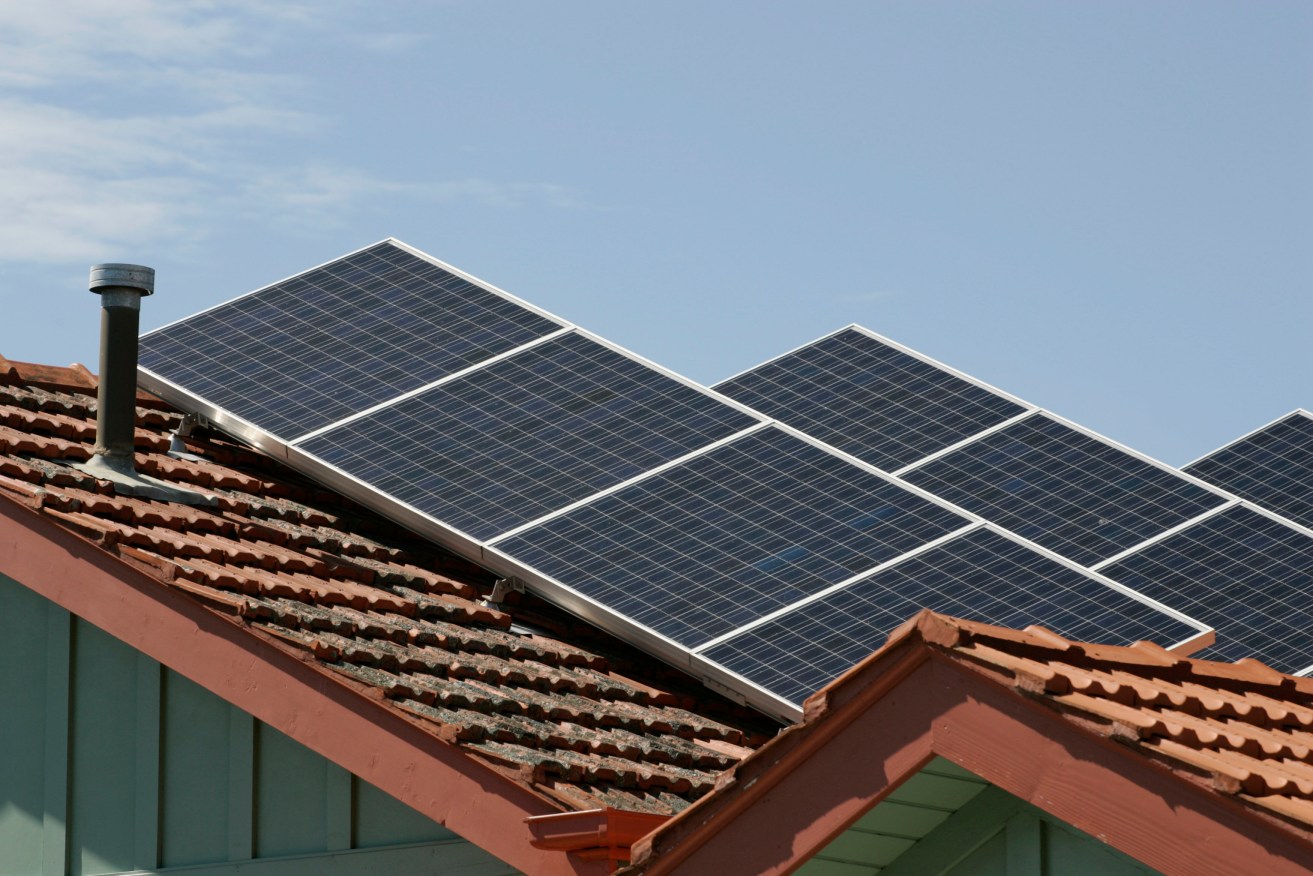SA renewables hit high mark in 2020
UPDATED: South Australia recorded its best year for renewable grid contribution in 2020 with the coronavirus causing little impact on the state’s overall energy consumption, according to data from the National Energy Market.


Photo: AAP/Raoul Wegat
Australia’s National Electricity Market (NEM) showed energy contribution from renewables during 2020 in South Australia was the highest on record at 53 per cent, up seven per cent from 2019 and five per cent from 2018.
September was the state’s best month for renewable contributions with 62 per cent coming from clean energy, while July’s renewable contribution was the lowest for the year.
In October, the state recorded 100 per cent of its demand from a combination of rooftop and large-scale solar for a 30-minute period on one day, followed a few days later with a claimed world-first, when all SA energy demands were met entirely by solar panels for just over an hour.
Despite the boom in solar generation in South Australia, coal remained “king and contributed 66.1 per cent of the 2020 total generation” in the nation according to UniSA sustainable energy engineering emeritus professor Wasim Saman.
“Overall, a continuous, steady but small decline of total use of electricity was used. It seems that last year’s COVID situation hasn’t impacted on our need for electricity,” he said.
Nationally, South Australia came second behind Tasmania for overall yearly renewable contribution to the grid.
Although wind was the largest source of grid-scale renewable energy for both South Australia and the nation, there was a surge in solar panel installation in 2020.
According to solar industry consultancy SunWiz, 5000 MW of solar power – an equivalent of almost 15 million average solar panels – were installed across the nation.
Every state and territory bar Tasmania had an increase in the number of panels and system size installed during the year, with 20,000 MW of solar capacity available nationwide, up from 15,000 in 2019.
The annual growth for rooftop solar exceeded 33 per cent for the past four years.
SunWiz managing director Warwick Johnston said the benefits of solar installation helped the industry overcome challenges as a result of the coronavirus pandemic, including supply shortages from China and economic uncertainty.
“In fact, the pandemic had an overall positive impact for the industry as people staying home more turned to solar to help reduce their electricity bills,” he said.
SunWiz said although commercial growth slowed – due in part to COVID-19’s impact on the broader economy – corporate power purchase agreements, green hydrogen, utility-scale battery projects and renewable subsidies provided optimism for the future.
In South Australia, Saman said the SA-NSW inter-connector would accelerate the state’s future renewable energy contribution. The inter-connector has been slated for completion in 2023.
He said, until then, the state should expect to see a gradual increase in its overall renewable contribution.
“That (interconnector) will create a new wave of installation on a large scale for both wind and solar, because we have the opportunity to use our excess electricity with other states,” he said.
“Until then … the limiting factors will be: what happens when the wind blows and the sun shines a lot? What do we do with the electricity?”
The increase in South Australia’s solar uptake was due to a decrease in the cost of rooftop and utility PV, according to Saman.
“There’s quite strong competition between suppliers and all of this is helping,” he said.
“The average size of a unit has also increased hugely, it’s now typically six kilowatts of power or more.”
The rapid uptake of solar panels in South Australia led authorities to last year give the Australian Energy Market Operator the power to turn off household rooftop solar in certain circumstances to prevent future blackouts.
Saman said increasing the number of battery and vertical power plants and incentivising electric vehicle uptake could further prevent the issue.
He decried South Australia’s proposed electric vehicle tax arguing government needed to incentivise electric vehicles to generate the state’s EV sales.
“Electric vehicles could use a lot of the excess solar and wind power when they’re available. We need to encourage individuals, especially in South Australia, to use electric vehicles,” he said.
“At the moment, the number (of electric vehicle users) is so tiny and the revenue will be very tiny and it’s giving the wrong message to road users for people contemplating buying electric vehicles.”




